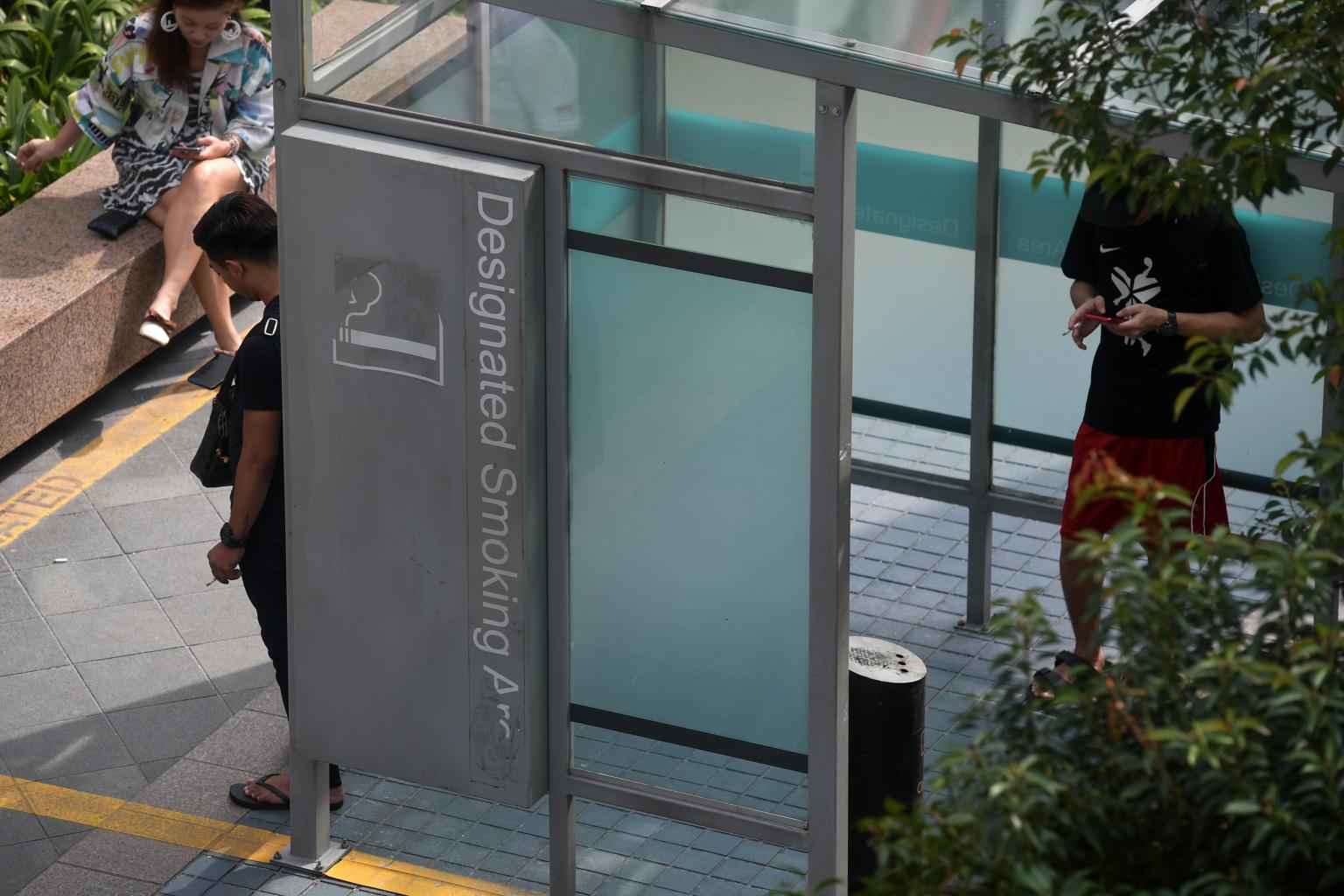NEA gets 2,900 complaints a month on smoking in prohibited areas in 2020
Sign up now: Get ST's newsletters delivered to your inbox

The volume of human traffic and whether an area is enclosed are some factors considered on banning smoking in certain places.
PHOTO: ST FILE
Justin Ong
Follow topic:
SINGAPORE - The National Environment Agency (NEA) received an average of about 2,900 complaints a month on smoking in prohibited areas in 2020, said Senior Minister of State for Sustainability and the Environment Amy Khor in Parliament on Tuesday (Feb 2).
This compares with 210 a month for smoking in non-prohibited areas.
Dr Khor said NEA has been progressively extending the prohibition of smoking to more places where the public is likely to be exposed to second-hand tobacco smoke.
Smoking is prohibited in more than 32,000 locations in Singapore. Public health experts here have said that over 300 non-smokers die each year because of exposure to second-hand smoke.
The volume of human traffic and whether an area is enclosed are some factors considered by NEA when determining if a place should be prohibited against smoking.
Ms Yeo Wan Ling (Pasir Ris-Punggol GRC) later pointed out that smokers may also light up in areas such as train stations and pathways to shopping malls - which are often open air, unsheltered and frequented by children and vulnerable groups.
Dr Khor said NEA's response has been to relocate bins, particularly those with ashtrays, to places with less footfall.
Later, she also responded to questions from Mr Liang Eng Hwa (Bukit Panjang) on the effectiveness of existing measures against high-rise littering. Cigarette butts are among the most common items flung out of windows; and MPs have previously called for a ban on smoking near windows or at balconies in apartment blocks.
Dr Khor said that in 2020, more surveillance cameras were deployed by NEA, with the number rising by more than 50 per cent over 2019.
By also partnering with town councils to investigate offences, NEA managed to take more than 1,000 enforcement actions against high-rise litterbugs in 2020.
The agency has previously revealed that from 2016 to 2019, it deployed cameras at more than 1,500 areas, and took between 1,100 and 1,500 enforcement actions per year.
Mr Liang, however, said there were "obviously no visible improvements" to the situation and asked if the deterrent effect was working.
Dr Khor, noting that the very nature of the offence, committed in dense, built-up estates, made it difficult to identify and apprehend litterbugs, said NEA has bolstered its enforcement and surveillance capabilities by keeping up with camera technology and tapping data analytics.
She also shared that the number of repeat offenders for high-rise littering acts was lower than those for general littering offences.
"At the end of the day, even as we step up enforcement, ultimately what is important is… we need Singaporeans to cooperate," said Dr Khor.

